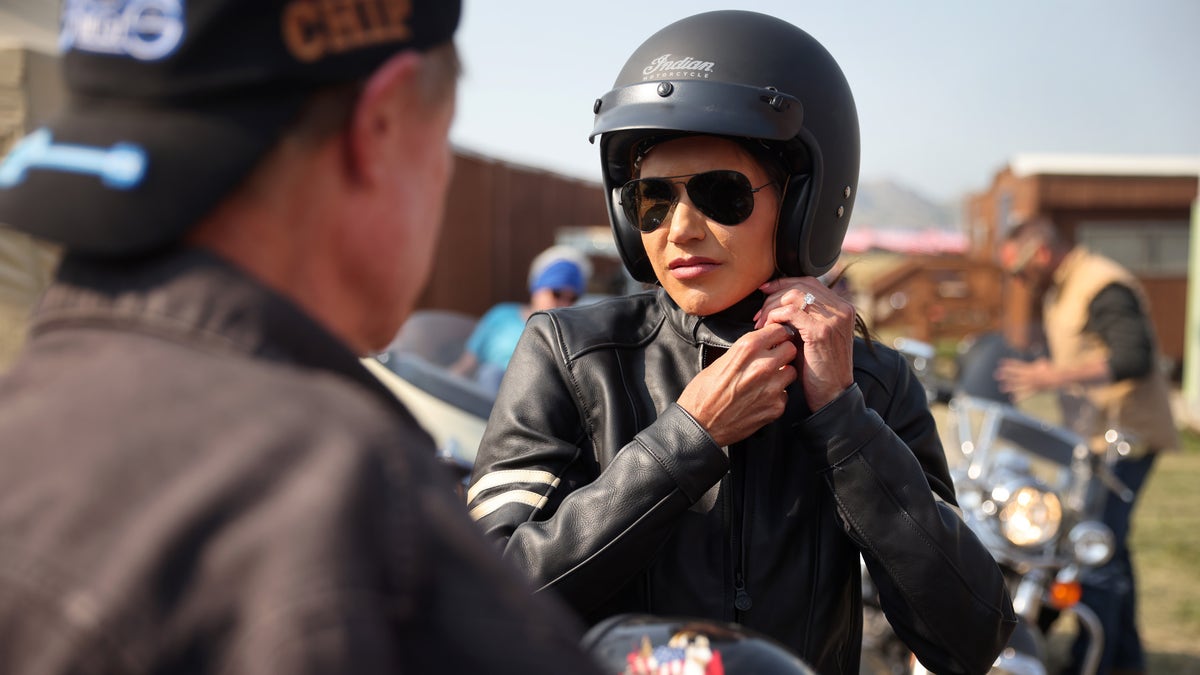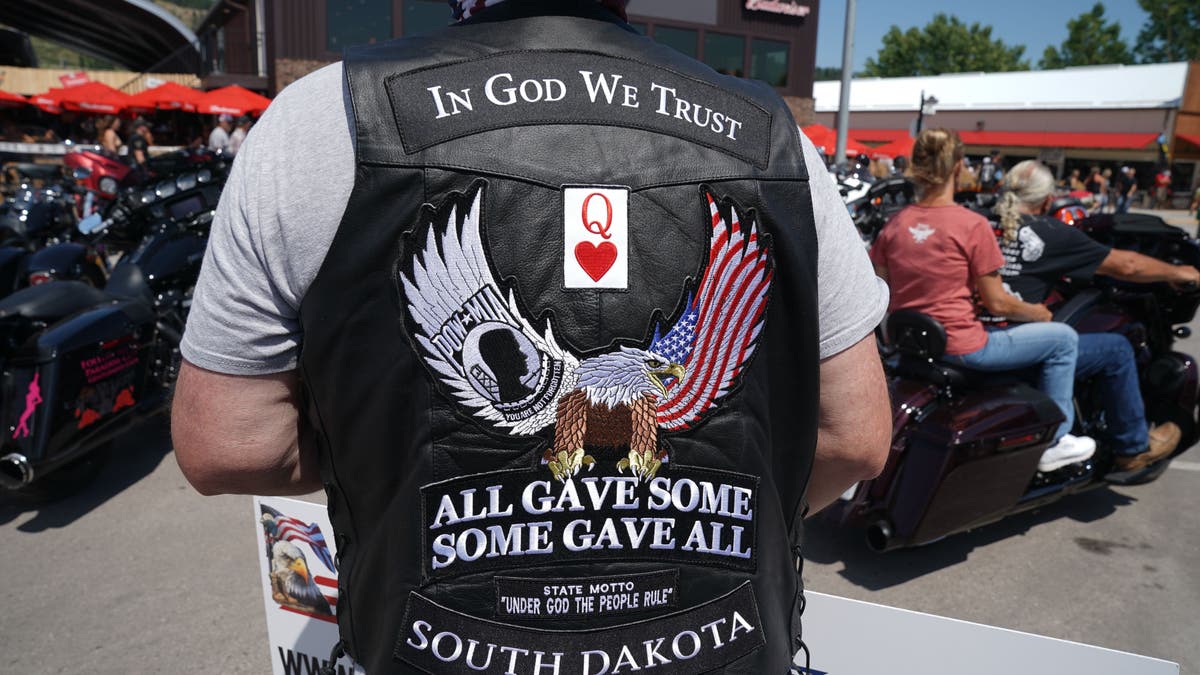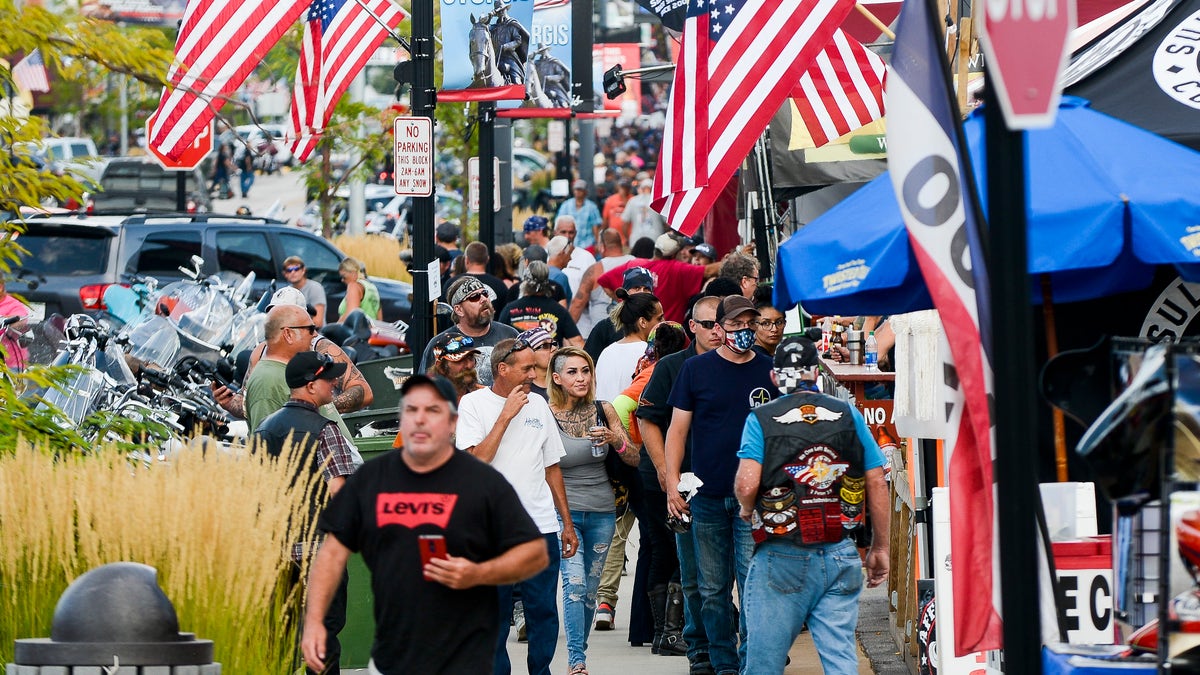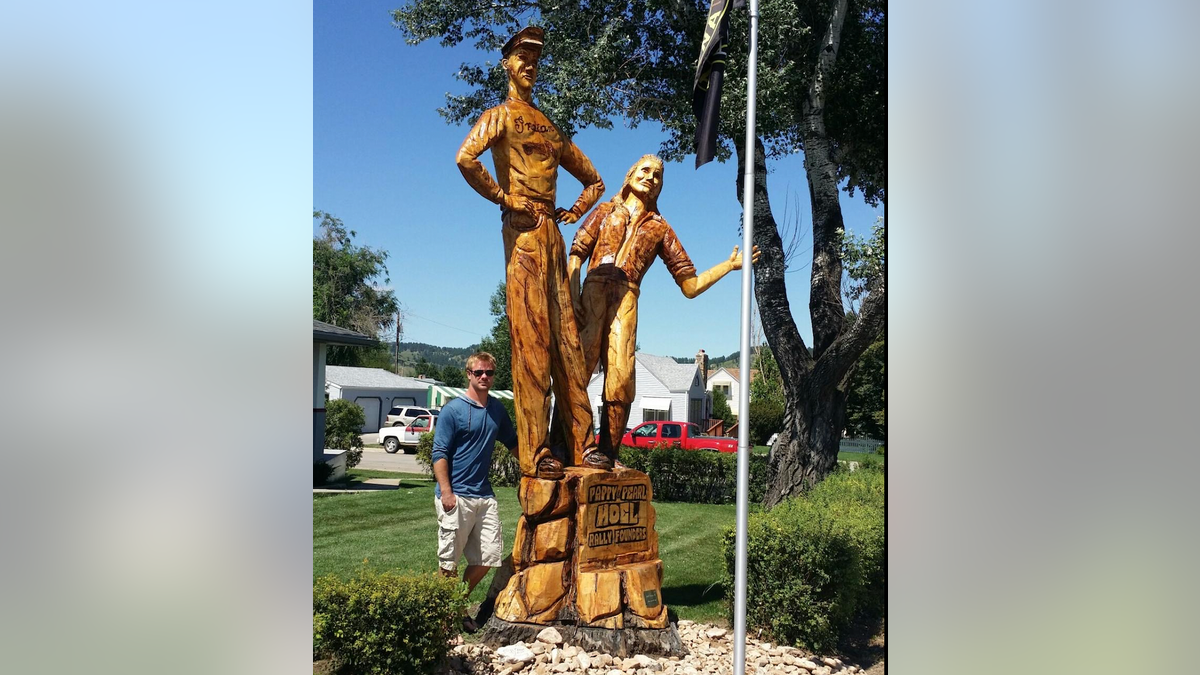The Sturgis Motorcycle Rally is rolling through South Dakota for the 84th time this week.
Credit local Indian Motorcycle dealer J.C. “Pappy” Hoel (1904-1989) for fathering what’s now the world’s premier celebration of motorcycles and an American way of life. The 10-day festival annually attracts more than 500,000 motorcycle enthusiasts from across the United States, and beyond, to a remote corner of one of the nation’s most sparsely populated states.
“Pappy was the man who put the brotherhood in motorcycles,” Coe Meyer, a Sturgis motorcycle historian, told Fox News Digital.
HARLEY-DAVIDSON FACES ‘WOKE’ ACCUSATIONS FROM STURGIS BIKERS: ‘BREAKS MY HEART’
“He’s the reason so many people come here today.”
Sturgis is located on the edge of the Black Hills of South Dakota, hundreds of miles from the nearest major city, smack-dab in the middle of the North American continent.
Hoel’s marketing ingenuity, enthusiasm for motorcycle racing and — unbeknownst to many — his paternal fondness for America’s World War II veterans struggling with the mental wounds of combat made Sturgis synonymous with motorcycles.

Pappy Hoel was an Indian Motorcycle dealer in Sturgis, South Dakota, in 1938 when he conceived of a racing rally to bring motorcycle enthusiasts to the area. (David Uhl/David Uhl Studios)
Hoel (rhymes with “oil”) started the Sturgis Motorcycle Rally in 1938, largely as a racing event, and as a way to promote his local dealership.
He watched it accelerate far beyond his dreams.
“He was like a P.T. Barnum-type character. He always had a trick up his sleeve,” said Vinny Terranova, who knew Hoel and his wife Pearl and who operates their original Junction Avenue motorcycle shop today as Pappy’s Vintage Cycles.
A record 747,000 vehicles rolled through Sturgis for the 75th anniversary rally in 2015.
“He loved motorcycles, loved racing and loved motorcyclists,” said Terranova of Pappy Hoel. “He and Pearl always had a pot of beans and franks on the grill. Nobody left hungry.”
The Hoels ran the Sturgis Motorcycle Rally for nearly 50 years, before turning it over to the City of Sturgis in the 1980s.
It was a monumental feat for the couple. To this day, it’s still an impressive achievement for a community of just 7,000 people.

Motorcycle enthusiasts attend the 81st annual Sturgis Motorcycle Rally on Aug. 8, 2021, in Sturgis, South Dakota. This year, the event is held from Aug. 2, 2024, through Aug. 11, 2024. (Scott Olson/Getty Images)
“The impact isn’t just on our city, it’s across the whole state,” Sturgis director of rally and events Tammy Even-Cordell told Fox News Digital.
“People who come to our rally stop all across South Dakota. They visit tourist sites. They congregate at bars, restaurants and hotels. It impacts the entire state.”
AMERICA THE BEAUTIFUL: 50 MUST-SEE LANDMARKS THAT TELL OUR NATIONAL STORY
In 2018, the city estimated that the rally produced $786 million in economic activity across South Dakota.
Mount Rushmore, the Black Hills and the Gold Rush community of Deadwood all enjoy an influx of visitors around the rally.
A record 747,000 vehicles rolled through Sturgis for the 75th anniversary rally in 2015 (three rallies were canceled during World War II), according to the South Dakota Department of Transportation.
The entire state of South Dakota boasts only 880,000 residents. Relative to population, the rally is as if 22 million people suddenly showed up for an event in California.

Bikers stop to take in Mt. Rushmore in Aug. 2021. Every August, hundreds of thousands of motorcycling enthusiasts are attracted to the southwest corner of South Dakota for the annual Sturgis Motorcycle Rally. (Scott Olson/Getty Images)
The COVID-19 hysteria proved no scare for Sturgis.
Attendance was down slightly, but the 2020 rally still attracted about 460,000 people, according to the state DOT — with no major health problems.
Blame it all on refrigeration
J.C. Hoel was born in Sturgis on May 30, 1904. He married Pearl Kinney of nearby Rapid City in May 1928. The couple remained together for more than 50 years.
Hoel got his start in business when he inherited an ice dealership from his father in the 1930s.
KRISTI NOEM: STURGIS RALLY IN SOUTH DAKOTA ABOUT ‘PERSONAL CHOICES’ OVER GOVERNMENT MANDATES
There was only one problem. Freon was invented in 1928. By the late 1930s, refrigerators were finding their way into every American home.
Hoel’s ice business hit a deep freeze.

Gov. Kristi Noem of South Dakota arrives at the Sturgis Buffalo Chip campground on Aug. 9. 2021, after riding in the Legends Ride for charity on a 2021 Indian Chief in Sturgis, South Dakota. (Scott Olson/Getty Images)
The biker icon took a detour, pursued his passion and brought an Indian Motorcycle franchise to Sturgis in 1936.
He formed the Jackpine Gypsies Motorcycle Club, chartered in 1937. The following year, he and the Gypsies hosted the first rally.
MEET THE AMERICAN WHO INVENTED THE HARD HAT, A PROUD SYMBOL OF OUR NATION’S WORKING CLASS
It was originally dubbed the Black Hills Motor Classic.
“Pappy would listen to [World War II veterans’] stories and let them vent.”
“Camping was provided in ‘Pappy’ and Pearl Hoel’s backyard, behind their motorcycle shop on Junction Avenue in Sturgis. A dirt track race was held in conjunction with the rally,” reported the American Motorcyclist Association Motorcycle Hall of Fame in its profile of Hoel.
Pearl is also a member of the same Hall of Fame.

Pappy’s Vintage Cycles, Sturgis, owned today by motorcycle dealer Vinny Terranova, pays homage to Sturgis Motorcycle Rally founder J.C. “Pappy” Hoel. He owned an Indian Motorcycle shop in this location when he founded the rally in 1938. (Vinny Terranova)
“Pearl remembered the menu of that first year: ‘Weenies, sloppy joes, potato salad and watermelon for dessert.’ The rally riders washed their free meal down with iced tea or coffee, served in a tent behind the Hoels’ garage at their dealership.”
Two hundred motorcyclists attended the first rally; then 800 showed up the next year. It continued to balloon from there.
“The rally riders washed their free meal down with iced tea or coffee, served in a tent behind the Hoels’ garage at their dealership.”
The event offered Hoel a chance to promote his love of motorcycles — and promote his fledgling Indian dealership. His idea worked brilliantly. By 1947, “he sold more bikes per capita than anyone in the nation,” reported the Hall of Fame.
Pappy’s embrace of WWII veterans
It was also around 1947, in the years after World War II, that Pappy’s legend began to spread among the burgeoning community of veterans who fueled America’s post-war motorcycling boom.
Many World War II veterans suffered from combat fatigue, long before post-traumatic stress disorder was diagnosed as an affliction in 1980.

Dane Senser walks on Main Street during the 80th Annual Sturgis Motorcycle Rally on Aug. 8, 2020, in Sturgis, South Dakota, wearing a POW-MIA vest. The rally traces its roots to founder Pappy Hoel’s embrace of America’s World War II veterans. (BRYAN R. SMITH/AFP via Getty Images)
“They bought Army surplus motorcycles and they would drive across the country just to get their head on straight,” reported History.com, noting that Harley-Davidson and Indian built 100,000 vehicles for the military during World War II.
HARLEY-DAVIDSON LAUNCHES MILITARY-THEMED MOTORCYCLES
“Much cheaper than cars, motorcycles afforded veterans a freewheeling mode of group transportation at a time when fitting back into society posed certain challenges.”
A Veterans Administration study estimates that 37% of World War II veterans seeking treatment after the war suffered PTSD.

People walk along Main Street lined with American flags, on Aug. 6, 2020, a day before the start of the Sturgis Motorcycle Rally in South Dakota. (Michael Ciaglo/Getty Images)
Not all sought treatment. Many sought the open road. Many found Pappy.
Hoel “was a tough old buzzard” when it came to business and forging the rally, said Meyer, the Sturgis historian.
Yet Hoel had a soft spot in his heart for the young Americans who fought in World War II and were struggling to come to terms with the horrific human carnage they witnessed in combat.
MEET THE AMERICAN WHO INVENTED THE ELECTRIC GUITAR AND INSPIRED ROCK ‘N’ ROLL
“A lot of veterans were [bleeped] up,” said Meyer. “They were hungry, they were broke, they had nowhere to stay. Their motorcycles needed work. And here was Pappy, dead set in the middle of the country.”

Motorcyclists drive down Main Street during the 80th Annual Sturgis Motorcycle Rally on August 7, 2020. That year, the event attracted nearly 500,000 visitors despite the threat of COVID-19. (Michael Ciaglo/Getty Images)
“He’d feed them and fix their motorcycles. But mostly he would listen to their stories and let them vent. When it was time to leave, he’d say, ‘Here’s what you owe me. Send me a check when you can.’”
The legend of the fatherly figure in Sturgis spread among the veterans leading the surge in motorcycle clubs and ridership around the nation.
STURGIS MOTORCYLE RALLY A BOON FOR BOY, 8, RUNNING ‘DONATIONS ONLY’ LEMONADE STAND
Many returned to the rally in Sturgis to see the man they dubbed Pappy — often with friends and with a check in hand.
Brotherhood of motorcycling
J.C. “Pappy” Hoel died on Feb. 1, 1989. He was 84 years old.
He’s buried today at Bear Butte Cemetery in Sturgis, the city where he was born and which he made famous around the world.
He and Pearl Hoel were charter members of the Sturgis Motorcycle Museum and Hall of Fame, founded in 2001.

Jarrett Dahl of Dahl’s Chainsaw Art poses next to his tribute to Pappy and Pearl Hoel carved from a giant silver cottonwood tree. The tree carving is outside Pappy’s Vintage Cycles, once the Hoels’ motorcycle shop. (Jarrett Dahl/Dahl’s Chainsaw Art)
His legacy has made Sturgis synonymous with motorcycles.
Horsepower of all kinds is deeply ingrained in the local culture.
CLICK HERE TO SIGN UP FOR OUR LIFESTYLE NEWSLETTER
“Motorcycles, four wheelers and horses. That’s how people grow up around here,” said Even-Cordell, the rally coordinator for the city of Sturgis, adding that she got her first dirt bike at age 7.
“It’s amazing to think about it. We’re known worldwide as a motorcycling Mecca. A place people put on their bucket list.”
Hoel’s legacy spreads far beyond the Sturgis city limits, said Meyer.
“When two bikers see each other, they wave, shake hands or hug each other. They call each other brother. It’s an informal fraternity.”
He added, “That’s what Pappy created. The fraternity. He fostered the brotherhood of motorcycling.”
https://www.foxnews.com/lifestyle/meet-american-founded-sturgis-motorcycle-rally-brotherhood


